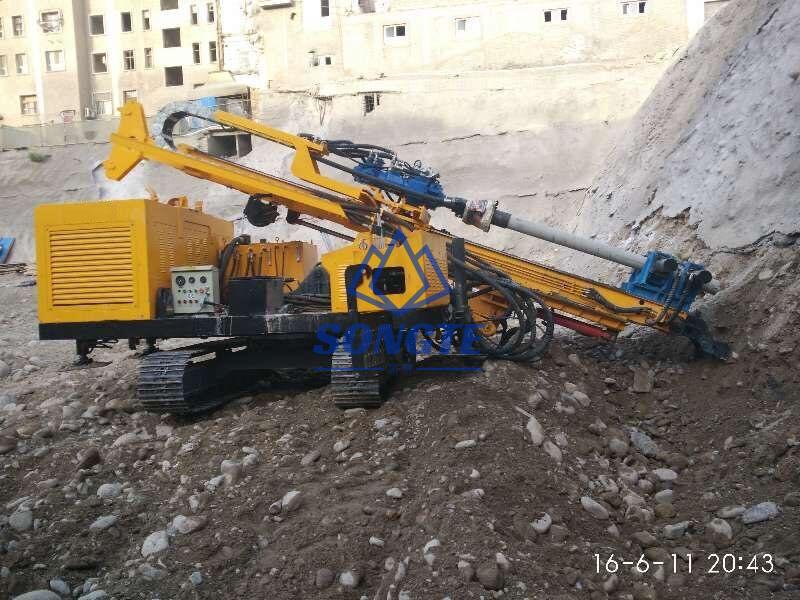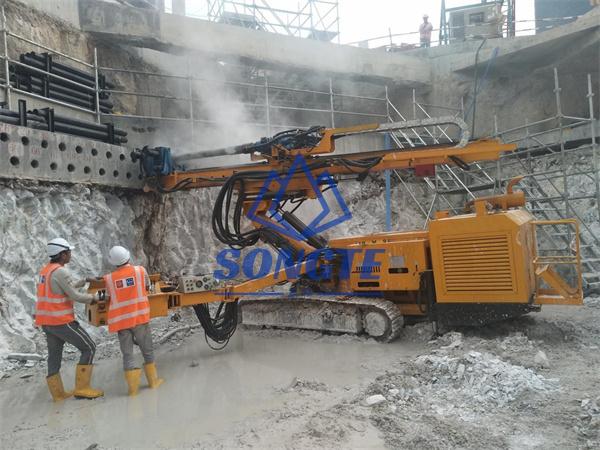The Importance of Drilling Rigs in Geotechnical and Civil Engineering
Geotechnical engineering and civil engineering are two important branches of engineering that deal with the design and construction of structures and infrastructure. Soil investigation, foundation reinforcement, and deep foundation pit support are some of the critical aspects of geotechnical engineering that are essential for the stability and safety of buildings, bridges, dams, and other structures. On the other hand, civil engineering deals with the construction, design, and maintenance of infrastructure such as highways, railways, and hydropower stations. Drilling rigs play a crucial role in both these fields, and their importance cannot be overstated.
SA-200C Full Hydraulic Top Drive Multi-functional Drilling Rig 200m

Soil investigation is an essential aspect of geotechnical engineering, and it involves drilling boreholes to collect soil samples for testing. The information gathered from the soil investigation is used to determine the suitability of the site for construction and to design the foundation of the structure. Drilling rigs are used to drill boreholes of different sizes and depths to collect soil samples. The type of drilling rig used depends on the soil type, the depth of the borehole, and the location of the site.
Foundation reinforcement is another important aspect of geotechnical engineering, and it involves strengthening the foundation of the structure to improve its stability. Soil nailing, anchoring engineering, high pressure rotary jet grouting, and anti-floating anchoring are some of the techniques used for foundation reinforcement. Drilling rigs are used to drill holes for soil nailing, anchoring, and high pressure rotary jet grouting.
Deep foundation pit support is required for high-rise buildings and structures built on soft or weak soil. Drilling rigs are used to install support systems such as steel piles, bored piles, and ground anchors to provide support to the foundation of the structure.
Our SA-200C anchor drilling rig working in Philippines and well received by customers

Ground source heat pump holes are another application of drilling rigs in geotechnical engineering. These holes are drilled to install a ground source heat pump system that uses the earth’s heat to provide heating and cooling for buildings.
In civil engineering, drilling rigs are used for site investigation, tunneling, and slope stabilization. Site investigation involves drilling boreholes to collect soil and rock samples for testing to determine the properties of the soil and rock layers. This information is used to design the infrastructure, such as highways and railways, and to determine the slope stability for hydropower station engineering.
Tunneling is another application of drilling rigs in civil engineering. Drilling rigs are used to excavate tunnels through rock and soil for infrastructure such as highways, railways, and water supply systems.
Slope stabilization is required for railway and highway slopes to prevent landslides and erosion. Drilling rigs are used to install anchors and grout injection to provide stability to the slopes.
Blasting hole engineering is another application of drilling rigs in civil engineering. Drilling rigs are used to drill holes for blasting and excavation of rock for infrastructure such as dams, tunnels, and highways.
In conclusion, drilling rigs are essential tools for geotechnical and civil engineering. They are used for soil investigation, foundation reinforcement, deep foundation pit support, ground source heat pump holes, site investigation, tunneling, slope stabilization, and blasting hole engineering. The selection of the appropriate drilling rig depends on the soil type, the depth of the borehole, and the location of the site. Drilling rigs are crucial for the stability and safety of buildings, infrastructure, and the environment.
 songtemachine
songtemachine
